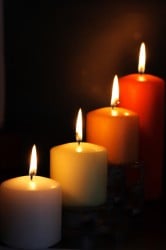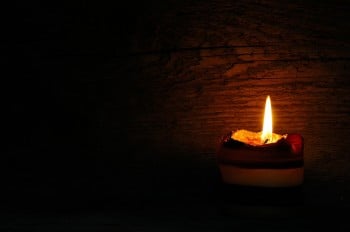In an ideal world, funeral plans would always be a family affair. Siblings would come together from around the country to bury a parent. Friends and colleagues would pitch in to help a bereaved spouse struggling with finances. Entire communities would mourn the passing of a child. While these types of scenarios can and do happen all the time, that is not always the case. There are many times when one person is left dealing with funeral plans and loss all on their own—and they may need to find support to make it through. (more…)
Posts Tagged ‘grieving’
Funeral Planning and Community Support
Monday, July 11th, 2016Funeral Visitation Etiquette
Tuesday, June 21st, 2016By now, most of us know how to behave ourselves at a funeral or memorial service. We understand the importance of funeral attire, punctuality, keeping kids and technology devices quiet, and offering condolences. Because funerals are more like a church service, in that mostly what is expected of you is to sit and listen, they are not quite as difficult to navigate as other funeral events. (more…)
Clearing the House after a Loved One Dies: Things You Can’t Donate
Monday, June 20th, 2016When a loved one dies and leaves all of his or her personal effects behind, it can be a great comfort to hold onto some of their most beloved belongings. Valuable artwork, a china cabinet that has been in the family for centuries, personal touches like perfume or a scarf—all these things can be passed on and treasured as you find ways to cope with your grief. Unfortunately, it isn’t possible to keep everything, which means you will eventually need to sort through their belongings. (more…)
Pre-Planning a Home Funeral
Tuesday, June 14th, 2016Making advance arrangements for a funeral is almost always a good idea, but there are times when it makes more sense than others. Home funerals are one of these times. (more…)
The Modern-Day Wake
Wednesday, May 18th, 2016These days, a wake is considered more of a formal tradition of the past than a way to say goodbye to a loved one. Historically, wakes were held when families cared for the body of a loved one at home (as opposed to a funeral home). There was no central location where bodies were prepared for burial, so families would keep the body in a room in the house for the one or two days it would take to make all the arrangements. (more…)
Unique Gifts for the Newly Bereaved
Monday, May 2nd, 2016When a friend or family member loses a loved one, we want to do all we can to make their situation easier. Traditional funeral gifts like flowers, food, and gift baskets are nice gestures, but when everyone offers the same type of present over the course of a few weeks, it can get overwhelming (you can only eat so many casseroles, after all). (more…)
When is the Best Time to Scatter Ashes?
Thursday, January 28th, 2016 One of the primary benefits of cremation is that you don’t have to hold a memorial service right away. With cremated remains, you can take days, weeks, months, or even years to get everyone together to hold a scattering ceremony. This kind of flexibility is important in our modern society, when families are spread out over the globe and can’t always rearrange their plans to travel to a funeral. (more…)
One of the primary benefits of cremation is that you don’t have to hold a memorial service right away. With cremated remains, you can take days, weeks, months, or even years to get everyone together to hold a scattering ceremony. This kind of flexibility is important in our modern society, when families are spread out over the globe and can’t always rearrange their plans to travel to a funeral. (more…)
How to Create a Memorial Space in Your Home
Monday, January 11th, 2016 A funeral or memorial service is just the start of your bereavement process. Losing a loved one isn’t something you just “get over” or “recover from.” It’s a lifelong journey of finding ways to cope and enjoying the positive things that remain.
A funeral or memorial service is just the start of your bereavement process. Losing a loved one isn’t something you just “get over” or “recover from.” It’s a lifelong journey of finding ways to cope and enjoying the positive things that remain.
Funerals are a great way to kick start this grieving process, but they often leave a sense of emptiness behind. Once the funeral planning is done and the guests have departed, it’s time to begin finding your new path through life—often with only yourself to rely on.
For many, creating a memorial space at home is an ideal way to begin this journey of healing. In addition to allowing you a physical space to mourn (that’s not as far away as a cemetery), you may find comfort from having memories of the deceased so close by.
- Dedicate a space for the memorial. A mantelpiece is the most common location, but any niche or corner (or even a shelf on the bookcase) will do. A coffee table, a desk, or even an entire room you don’t use may also apply.
- Place an urn or photo in the space. If you had the deceased cremated, you can keep an urn of the ashes in the memorial space. If not, you can place a photograph or beloved item (shoes, a stuffed animal, a favorite hat, a trophy, an award medal, a wedding ring) in the center location. Anything that reminds you of the deceased and brings you joy will work.
- Consider flowers, decorations, and other commemorative items. There’s no rule about how many things you need to put in a memorial space, so feel free to include anything you feel is relevant to your relationship with your loved one. Some people also like to put up seasonal items (in much the same way you might place seasonal decorations at a grave site).
- Burn candles or make offerings. Depending on your spiritual beliefs, you may want to light special candles or burn incense. Aromatherapy candles can provide a double benefit if you choose soothing, healing scents that bring you personal comfort or remind you of the deceased. (Make sure you never leave anything on fire unattended.)
- Keep it up as long as you need. The great thing about a memorial space in your home is that you can keep it up year-round, and with the exception of an occasional dusting, you don’t need to do anything to maintain it.
The need for having a safe, physical space to mourn is why we have cemeteries and memorials in the first place. So much about death is intangible, and making a physical connection with those we have lost is difficult. A personal shrine or memorial space not only gives you more flexibility in your grief, but it allows you to personalize the process so that you can always feel connected.










